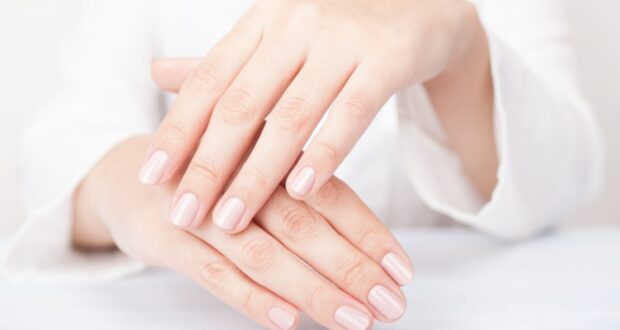By: Red Hot Mamas
Published: April 15, 2024
Written by Karen Giblin
Spring has officially arrived! For many of us our fingers and toes have not seen the light of day for months and we are eager to ditch the winter boots for flip flops..
Before heading to the nail salon, take a good look at your nails, as your nails can indicate health issues, including chronic conditions and vitamin deficiencies. Nail issues may also occur because of injury. It is important to pay attention to your nail health as a wide variety of diseases can be detected by looking at the changes in your nails.
Healthy nails are smooth with no discoloration. You might consider speaking with your healthcare professional if you notice any abnormalities such as the color, thickness or something is amiss with the texture or color of your nails.
Brittle nails are quite common and are called “onychoschizia”. Brittle nails are usually caused by repeated wetting and drying of your fingernails, so you should use gloves when getting your hands wet, such as when doing dishes. In some cases, brittle nails might also be a sign of hypothyroidism or iron deficiency. So don’t forget to wear gloves while you are washing dishes and try applying lotions that contain lanolin which might help with the problem of brittle nails.
Sometimes we notice our nails changing in color. For instance, yellow nails can be a result of nail polish you have been using or may be a sign of infection or other conditions such as thyroid, psoriasis or even diabetes. Oftentimes, new nails grow clear again once you stop using nail polish, but you should talk with your healthcare provider if you don’t notice improvement after a few weeks.
White spots sometimes signify a fungal infection, an allergic reaction or even a zinc deficiency. Again, it might be a good idea to give your nails a break and stop using nail polish for a while and if the spots remain after this, talk to your healthcare provider.
How to keep your fingernails healthy:
• Moisturize your nails- An important step in having healthy nails is to moisturize them regularly.
• Eat a balanced diet- Eating a variety of whole foods which include plenty of fruits, vegetables, whole grains — will usually get you all the vitamins, minerals, and nutrients your nails need.
• Applying polish- It is recommended to always use a good quality nail color. Do not use nail polish remover more than twice a month as it makes nails very dry and brittle. Instead reapply polish if it peels off.
• Quit biting your nails- chronic nail-biter, try to quit the habit — it can lead to nail deformities, as well as infections.
In closing, nails are not all about glitter and polish. Your nails provide clues to your overall health. And remember, that most underlying causes of nail issues are easy to treat once they’re identified so always discuss your nail concerns with your healthcare provider.
Listed below is a great resource from www.healthline.com:
Nail health chart.
| Issue | Common cause | Treatment options |
| Brittle nails | Frequent wetting and drying | Apply lotions containing alpha hydroxy acids or lanolin. |
| Soft or weak nails | Overexposure to moisture or chemicals | Keep nails natural and unpolished; consider taking a multivitamin containing B vitamins and calcium. |
| Peeling | Injury or iron deficiency | Keep nails moisturized; add iron-rich foods to diet. |
| Ridges | Aging (vertical) or underlying condition (vertical) | Gently buff nails; talk with a healthcare professional. |
| Yellow nails | Infection or reaction to product | Give nail time to grow out (it should come in clear); apply tea tree oil or vitamin E if infected. |
| Black lines | Injury | Give nail time to grow out. |
| White spots | Injury, infection, allergic reaction, mineral deficiency | Give nail time to grow out; avoid using nail polish; talk with a healthcare professional. |
| No half moons | Nothing — not everyone has them! | Talk with a healthcare professional if accompanied by weight changes, dizziness, changes in mood, or other unexplained symptoms. |
 Red Hot Mamas In Charge of Change.
Red Hot Mamas In Charge of Change.




